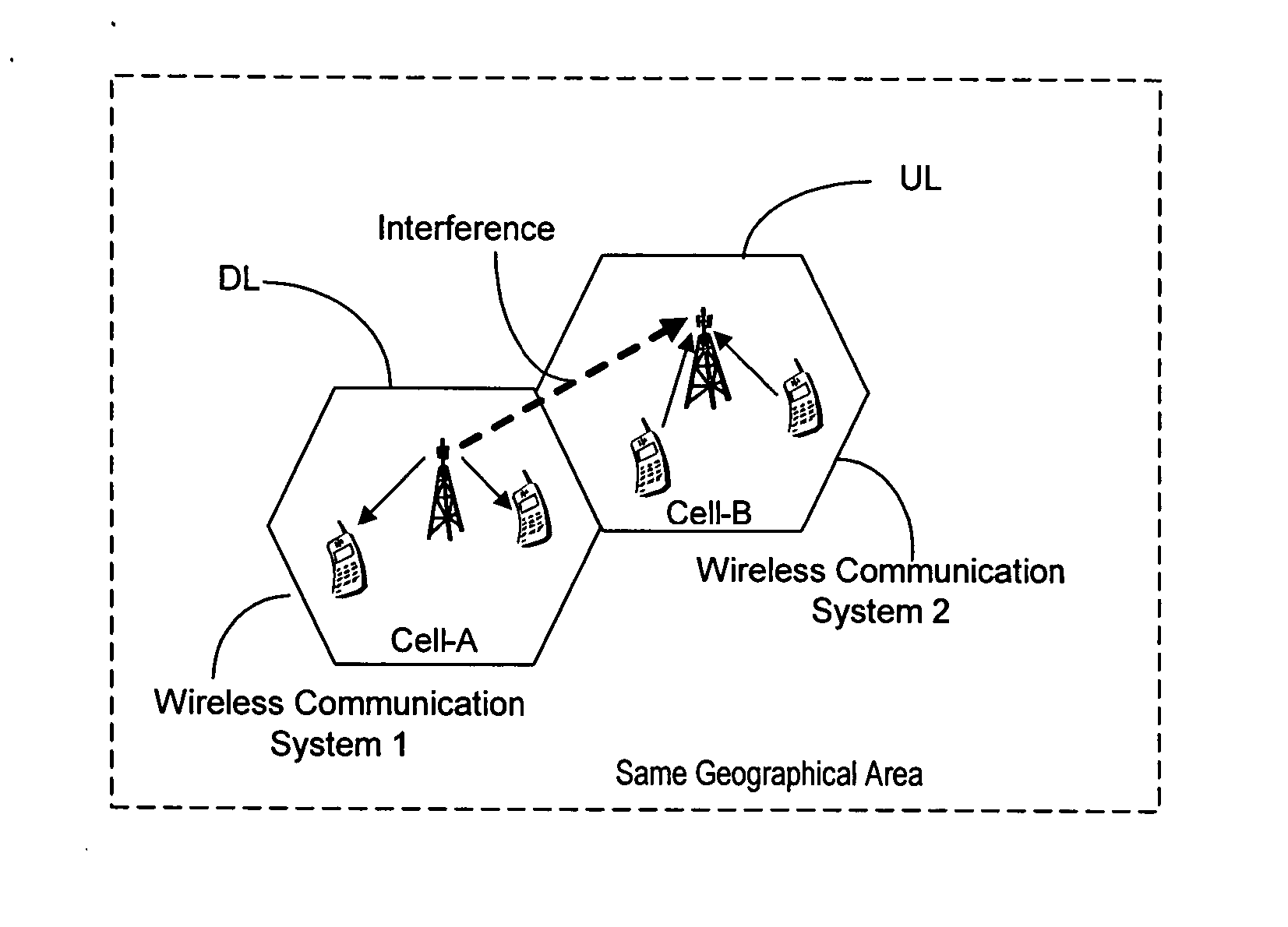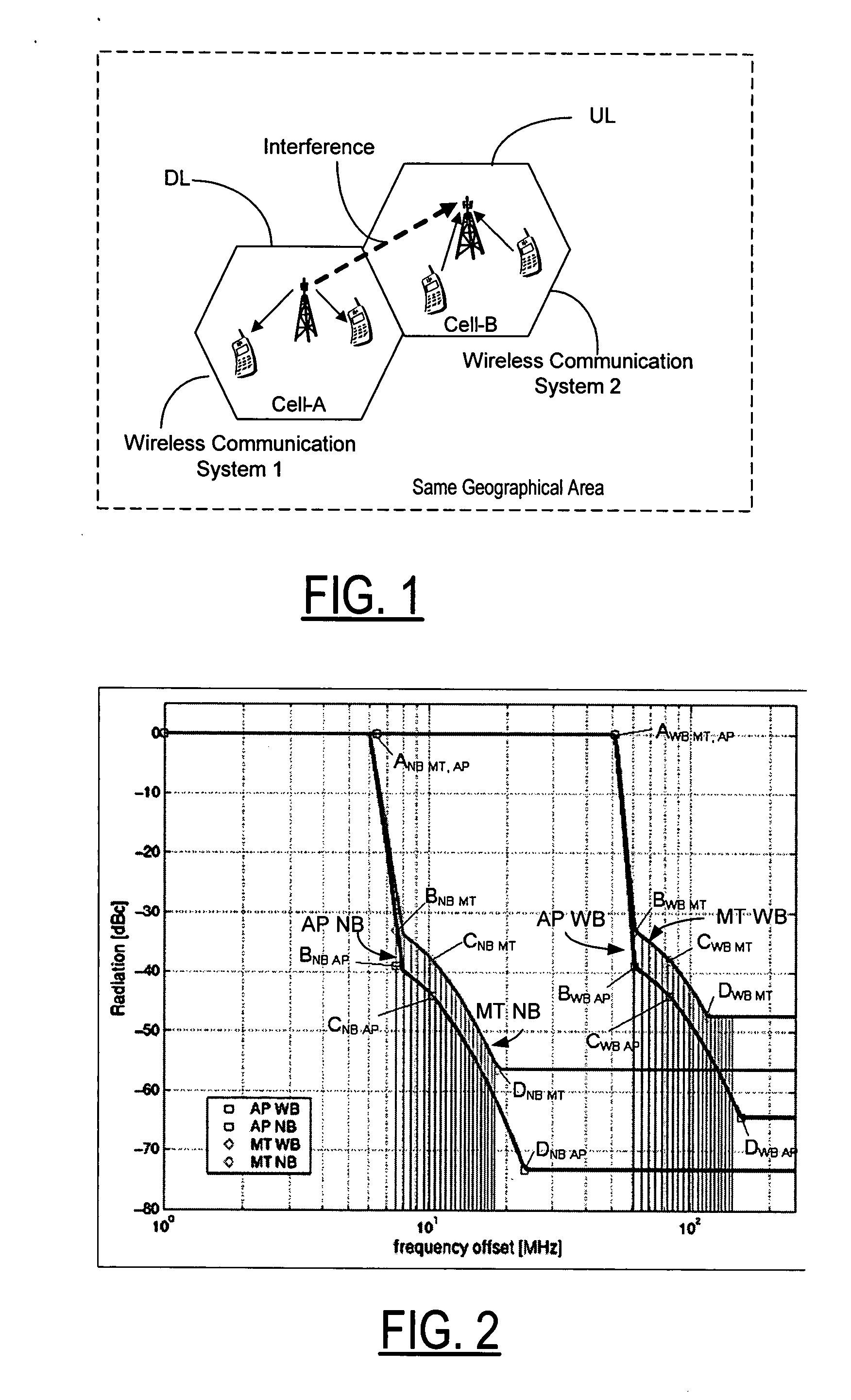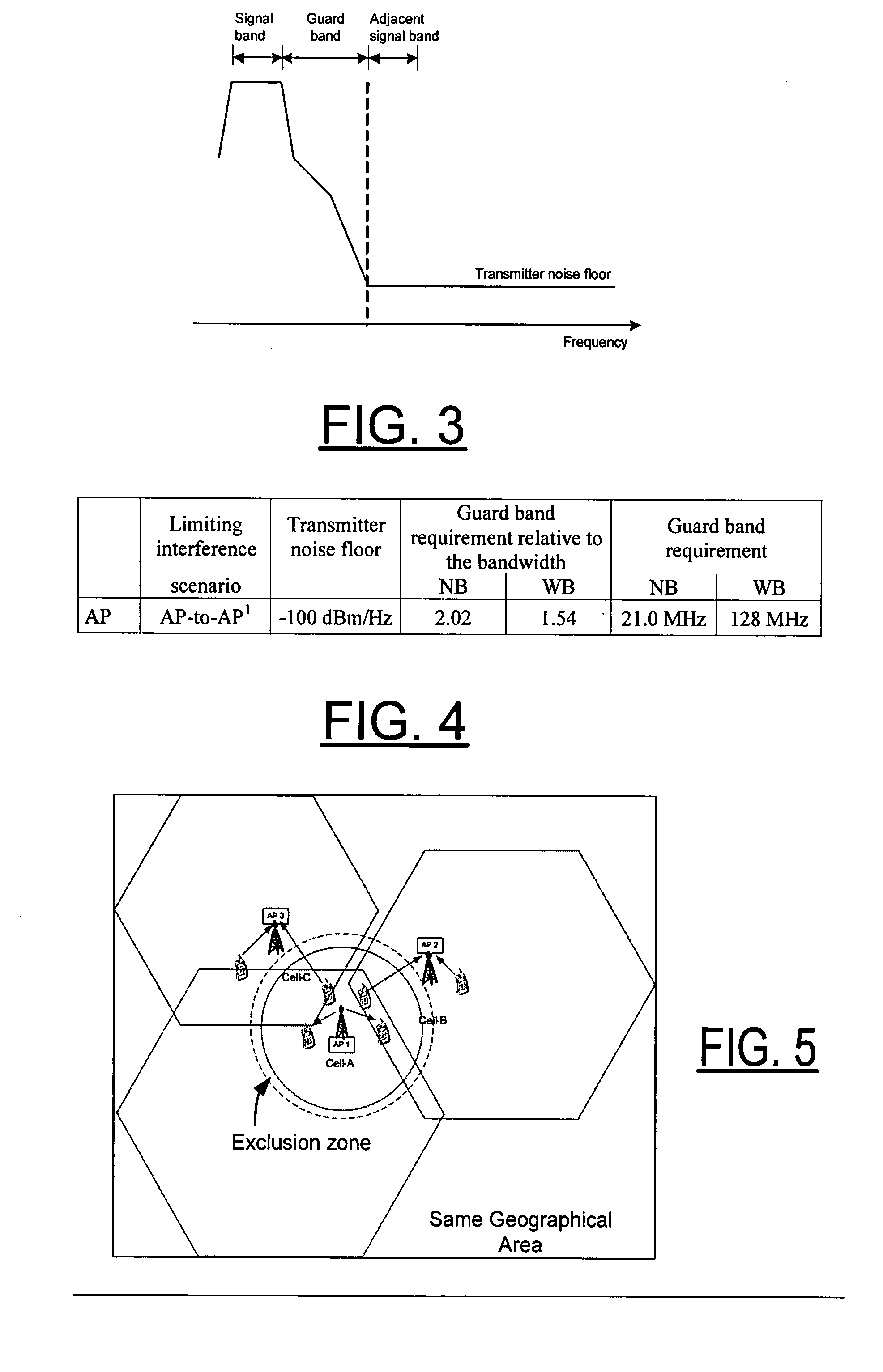Method and apparatus for reducing the guard band between wireless communication systems operating in the same geographical area
a wireless communication system and geographical area technology, applied in the field of wireless communication systems, can solve the problems of ineffective use of scarce spectrum resources, deterioration of the performance of the first operator's network by other operators, and inability to co-locate different operators
- Summary
- Abstract
- Description
- Claims
- Application Information
AI Technical Summary
Benefits of technology
Problems solved by technology
Method used
Image
Examples
example i
[0056] The case of an operator operating two wireless communication systems in neighboring bands in the same geographical area is illustrated in this example of an embodiment of the invention.
[0057] The APs of the two systems scan regularly (e.g. every hour) the neighboring frequency bands for a beacon. If the APs receive a beacon, they estimate the received signal strength, the resulting coupling loss and based on AP's own transmission power, the interference it will create to the AP of the other system and respond accordingly: [0058] (a) If the interference created to the other AP is below the acceptable interference threshold level sent in the beacon signal, then the AP does not have to change its operation. [0059] (b) If the interference is above the acceptable interference threshold level, then the AP can for example lower the power accordingly or change the antenna radiation pattern (e.g. by beamforming or mechanically changing the antenna direction) until the interference is...
example ii
[0065] The case of two operators operating two wireless communication systems in neighboring bands in the same geographical area is illustrated in this example of an embodiment of the invention.
[0066] The APs of the two systems scan regularly (e.g. every hour) the neighboring frequency bands for a beacon. If the APs receive a beacon, they estimate the received signal strength, the resulting coupling loss and based on the AP's own transmission power, the interference it will create to the AP of the other system and respond accordingly: [0067] (a) If the interference created to the other AP is below the threshold sent in the beacon signal, then the AP does not have to change its operation. [0068] (b) If the interference is above the acceptable interference threshold level, then the AP takes an action depending on the agreement between the operators. [0069] (1) If the other operator has priority in the area, then the AP will lower the power accordingly or change the antenna radiation ...
PUM
 Login to View More
Login to View More Abstract
Description
Claims
Application Information
 Login to View More
Login to View More - R&D
- Intellectual Property
- Life Sciences
- Materials
- Tech Scout
- Unparalleled Data Quality
- Higher Quality Content
- 60% Fewer Hallucinations
Browse by: Latest US Patents, China's latest patents, Technical Efficacy Thesaurus, Application Domain, Technology Topic, Popular Technical Reports.
© 2025 PatSnap. All rights reserved.Legal|Privacy policy|Modern Slavery Act Transparency Statement|Sitemap|About US| Contact US: help@patsnap.com



